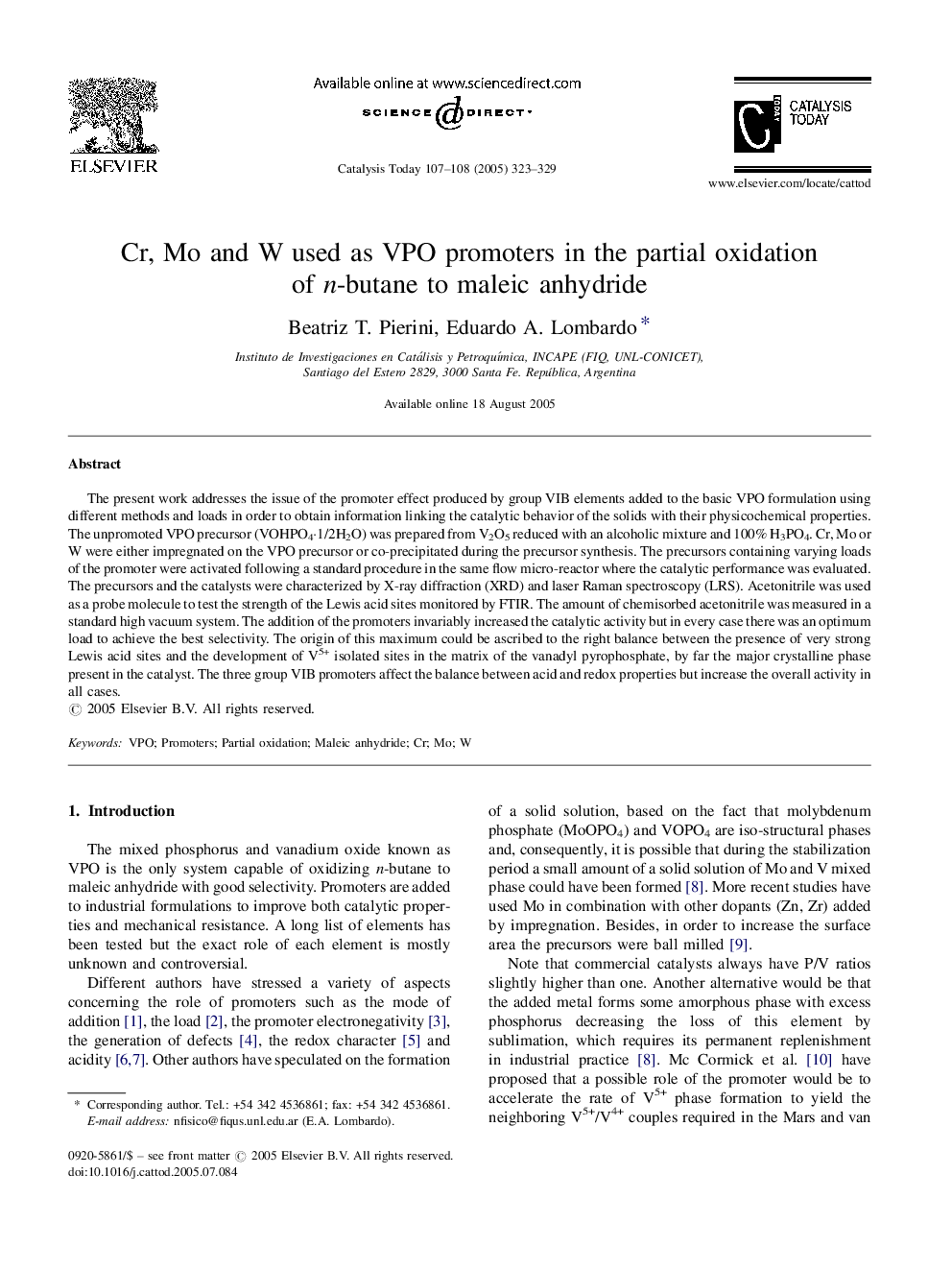| Article ID | Journal | Published Year | Pages | File Type |
|---|---|---|---|---|
| 9610202 | Catalysis Today | 2005 | 7 Pages |
Abstract
The present work addresses the issue of the promoter effect produced by group VIB elements added to the basic VPO formulation using different methods and loads in order to obtain information linking the catalytic behavior of the solids with their physicochemical properties. The unpromoted VPO precursor (VOHPO4·1/2H2O) was prepared from V2O5 reduced with an alcoholic mixture and 100% H3PO4. Cr, Mo or W were either impregnated on the VPO precursor or co-precipitated during the precursor synthesis. The precursors containing varying loads of the promoter were activated following a standard procedure in the same flow micro-reactor where the catalytic performance was evaluated. The precursors and the catalysts were characterized by X-ray diffraction (XRD) and laser Raman spectroscopy (LRS). Acetonitrile was used as a probe molecule to test the strength of the Lewis acid sites monitored by FTIR. The amount of chemisorbed acetonitrile was measured in a standard high vacuum system. The addition of the promoters invariably increased the catalytic activity but in every case there was an optimum load to achieve the best selectivity. The origin of this maximum could be ascribed to the right balance between the presence of very strong Lewis acid sites and the development of V5+ isolated sites in the matrix of the vanadyl pyrophosphate, by far the major crystalline phase present in the catalyst. The three group VIB promoters affect the balance between acid and redox properties but increase the overall activity in all cases.
Related Topics
Physical Sciences and Engineering
Chemical Engineering
Catalysis
Authors
Beatriz T. Pierini, Eduardo A. Lombardo,
